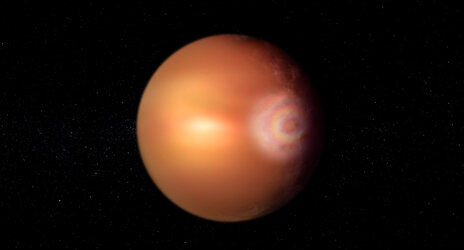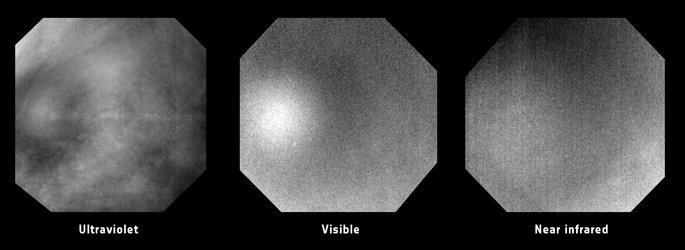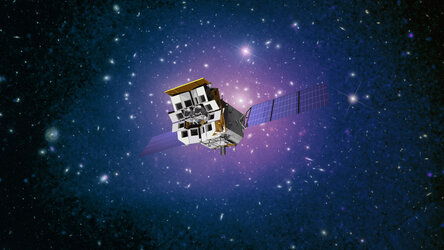Accept all cookies Accept only essential cookies See our Cookie Notice

About ESA
The European Space Agency (ESA) is Europe’s gateway to space. Its mission is to shape the development of Europe’s space capability and ensure that investment in space continues to deliver benefits to the citizens of Europe and the world.
Highlights
ESA - United space in Europe
This is ESA ESA facts Member States & Cooperating States Funding Director General Top management For Member State Delegations European vision European Space Policy ESA & EU Responsibility & Sustainability Annual Report Calendar of meetings Corporate newsEstablishments & sites
ESA Headquarters ESA ESTEC ESA ESOC ESA ESRIN ESA EAC ESA ESAC Europe's Spaceport ESA ESEC ESA ECSAT Brussels Office Washington OfficeWorking with ESA
Business with ESA ESA Commercialisation Gateway Law at ESA Careers Cyber resilience at ESA IT at ESA Newsroom Partnerships Merchandising Licence Education Open Space Innovation Platform Integrity and Reporting Administrative Tribunal Health and SafetyMore about ESA
History ESA Historical Archives Exhibitions Publications Art & Culture ESA Merchandise Kids Diversity ESA Brand Centre ESA ChampionsLatest
Space in Member States
Find out more about space activities in our 23 Member States, and understand how ESA works together with their national agencies, institutions and organisations.
Science & Exploration
Exploring our Solar System and unlocking the secrets of the Universe
Go to topicAstronauts
Missions
Juice Euclid Webb Solar Orbiter BepiColombo Gaia ExoMars Cheops Exoplanet missions More missionsActivities
International Space Station Orion service module Gateway Concordia Caves & Pangaea BenefitsLatest
Space Safety
Protecting life and infrastructure on Earth and in orbit
Go to topicAsteroids
Asteroids and Planetary Defence Asteroid danger explained Flyeye telescope: asteroid detection Hera mission: asteroid deflection Near-Earth Object Coordination CentreSpace junk
About space debris Space debris by the numbers Space Environment Report In space refuelling, refurbishing and removingSafety from space
Clean Space ecodesign Zero Debris Technologies Space for Earth Supporting Sustainable DevelopmentLatest
Applications
Using space to benefit citizens and meet future challenges on Earth
Go to topicObserving the Earth
Observing the Earth Future EO Copernicus Meteorology Space for our climate Satellite missionsCommercialisation
ESA Commercialisation Gateway Open Space Innovation Platform Business Incubation ESA Space SolutionsLatest
Enabling & Support
Making space accessible and developing the technologies for the future
Go to topicBuilding missions
Space Engineering and Technology Test centre Laboratories Concurrent Design Facility Preparing for the future Shaping the Future Discovery and Preparation Advanced Concepts TeamSpace transportation
Space Transportation Ariane Vega Space Rider Future space transportation Boost! Europe's Spaceport Launches from Europe's Spaceport from 2012Latest

Astronaut's glory
Thank you for liking
You have already liked this page, you can only like it once!
Despite humankind’s scientific prowess there are still many phenomena that defy explanation or a common agreement on why something happens. A ‘glory’ is a rare optical phenomenon that is mostly seen by pilots and mountain climbers looking down at mists or clouds. Forming a miniature circular rainbow, glories are seen when the Sun shines from behind and interacts with water droplets to refract light back to the observer.
This picture is an even more rare example of a glory seen from space. Snapped by ESA astronaut Alexander Gerst on 14 September 2018 during his Horizons mission, he commented: “Surprised to see a pilot's glory from the International Space Station, an optical phenomenon that is often visible from aircraft, or on volcanoes when looking down in a foggy crater, with Sun in the back. Our shadow is (theoretically) right in the middle of the rainbow, but we don't have a core shadow due to our altitude.”
To see a glory at the International Space Station’s cruising altitude of 400 km is surprising as they require specific atmospheric conditions.
Our atmosphere extends to 480 km above the surface of Earth but most of it stays within 16 km, making the boundaries of where “space” begins hardly a defined point.
The Kármán line at 100 km altitude is a generally accepted point that represents the boundary between Earth and space, but weather, and space weather, will often take no heed of boundaries defined by humans.
In the upper reaches of our atmosphere many more phenomena have been spotted that we know little about, from noctilucent clouds to sprites, blue jets and elves, but the International Space Station offers a great platform to investigate these phenomena.
The Atmosphere-Space Interactions Monitor (ASIM) was installed this year as a dedicated facility outside the European space laboratory Columbus. The collection of optical cameras, photometers and X- and gamma-ray detectors are designed to look for electrical discharges born in stormy weather conditions that extend above thunderstorms into the upper atmosphere.
This observatory is not designed to investigate glories but space events such as sprites and blue jets are just as awe-inspiring to view from space. ESA astronaut Andreas Mogensen captured a sprite on camera from the International Space Station, proving the phenomenon can be observed from space – rare photos of the phenomena were also taken by pilots and researchers from mountaintops.
Sometimes a simple photograph can spark scientific investigation or even full-blown scientific research. Alexander’s pictures of aurora from his last mission in 2014 are adding extra information for researchers analysing these beautiful atmospheric displays of light.
The International Space Station also hosted ESA’s Solar facility that monitored the radiation emitted by the Sun across the electromagnetic spectrum. For almost a decade it tracked the Sun to measure our star’s energy, delivering the most accurate data on the Sun’s power that influences our climate on Earth but also how satellites operate in space.
The phenomenon in this picture is related to atmospheric physics and so strictly speaking not space weather. This week, however ESA is highlighting space weather, from the science behind it and how we study it, to its effect on satellites in space and ESA’s plans for the future. Keep your eye on ESA’s online channels to find out more, or follow these hashtags in social media: #SpaceWeather #SolarHazards #SafeguardingOurPlanet.
-
CREDIT
ESA/NASA -
LICENCE
ESA Standard Licence

Artist impression of glory on exoplanet WASP-76b

Venus glory

Venus glory details

Simulated views of glory on Venus and Earth















 Germany
Germany
 Austria
Austria
 Belgium
Belgium
 Denmark
Denmark
 Spain
Spain
 Estonia
Estonia
 Finland
Finland
 France
France
 Greece
Greece
 Hungary
Hungary
 Ireland
Ireland
 Italy
Italy
 Luxembourg
Luxembourg
 Norway
Norway
 The Netherlands
The Netherlands
 Poland
Poland
 Portugal
Portugal
 Czechia
Czechia
 Romania
Romania
 United Kingdom
United Kingdom
 Slovenia
Slovenia
 Sweden
Sweden
 Switzerland
Switzerland
























